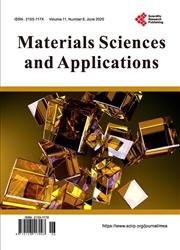Solvent Composition Effect on PDMS Composite Dielectric Elastomer Actuator
引用次数: 0
Abstract
Polydimethylsiloxane (PDMS) is inactive to electric fields, but when combined with ferroelectric cyanoethyl sucrose (CR-U), it becomes an electrically active actuator material. The PDMS/CR-U composites were prepared by casting method using tetrahydrofuran (THF) and acetone (ACT) as solvents. The effect of a mixed solvent composition was investigated. The viscosity of the PDMS/CR-U/solvent solution decreased as the THF composition increased. The composite film obtained by evaporation of the solvent and cross-linkage of PDMS showed a phase-separated structure. Spherical CR-U dispersed in the PDMS matrix with a skin layer on one surface side. Electrical resistance, dielectric constant, space-charge distribution, and electrically induced bending deformation behavior were investigated for these composite films. The composite films prepared from a THF-rich solvent exhibited lower surface resistivity than those prepared from a THF-poor solvent. Applying an electric field to the composite film resulted in an asymmetric space-charge distribution with charge accumulation in the skin layer. THF content decreased the viscosity of the solution, meaning the decrease of the apparent size of PDMS chain aggregates. It allows the dispersion of CR-U in the PDMS matrix and also results in the decline of resistivity, the increase of permittivity, and the increase of charge injection. The results explained the structure formation of the composite film and the electric field response as an actuator. A casting solvent of THF content of 87.5 wt% or more is essential for the function of the PDMS/CR-U composite.溶剂组成对PDMS复合介质弹性体致动器的影响
聚二甲基硅氧烷(PDMS)对电场无活性,但当与铁电氰基乙基蔗糖(CR-U)结合时,它成为电活性的执行器材料。以四氢呋喃(THF)和丙酮(ACT)为溶剂,采用铸造法制备了PDMS/CR-U复合材料。考察了混合溶剂组成对反应的影响。随着THF组分的增加,PDMS/CR-U/溶剂溶液的粘度降低。通过溶剂蒸发和PDMS交联得到的复合膜具有相分离结构。球形CR-U分散在PDMS基体中,表面一侧有一层表皮层。研究了复合薄膜的电阻、介电常数、空间电荷分布和电致弯曲变形行为。富thf溶剂制备的复合膜的表面电阻率低于贫thf溶剂制备的复合膜。在复合薄膜上施加电场会导致不对称的空间电荷分布,并在蒙皮层中积聚电荷。THF含量降低了溶液的粘度,这意味着PDMS链聚集体的表观尺寸减小。它允许CR-U在PDMS基体中分散,也导致电阻率下降,介电常数增加,电荷注入增加。结果解释了复合薄膜的结构形成和作为致动器的电场响应。四氢呋喃含量为87.5 wt%或以上的铸造溶剂对PDMS/CR-U复合材料的功能至关重要。
本文章由计算机程序翻译,如有差异,请以英文原文为准。
求助全文
约1分钟内获得全文
求助全文

 求助内容:
求助内容: 应助结果提醒方式:
应助结果提醒方式:


